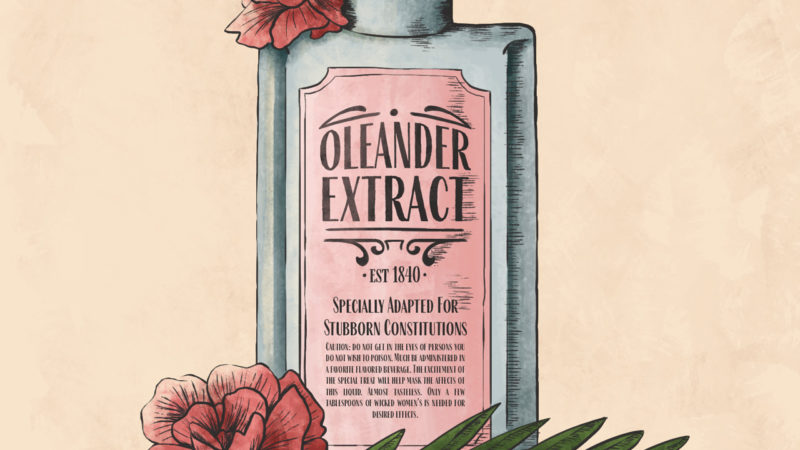What’s Your Poison?
The dose makes the poison. ~Paracelsus
Poisoning has been a favorite tool of extinguishing lives for centuries, or rather a few millennia. Its origins are actually quite distinguished and impressive from an intellectually and historically admirable perspective.
Back When Men Wore Sandals
Going all the way back to the smarty-pants, Socrates, who technically took his own life, after he was sentenced to be executed. It seems folks had grown tired of hearing him go on and on about his daimonion and how important it is to examine your (miserable) life.
Socrates chose a hot cup of hemlock tea to aid in his farewell to the world. He threw it back like a frosty long-neck on a hot summer’s day, walked around until his legs became heavy, and then went horizontal allowing the poison finished the job.
And then there was the Queen of the Nile, the beautiful and brilliant Cleopatra. Enthralled in love and war, she had to either face her death by Octavian, losing Egypt to the Roman emperor, or take matters into her own hands.
Her love, Antony, was convinced that his army left him for Octavian because of something she said to save herself. Cleopatra, in an effort to thwart the enemy and prevent Antony from being mad at her, had her servants tell Antony that she was dead. Which backfired, he threw himself onto his own sword and died in her arms.
All that was left for Cleopatra to do was to off herself. And what better way than snake venom? We all know the story of her suicide by an asp, but historians are now thinking it was just some good old poison that did the job. Opium? Wolfsbane? Hemlock? Or perhaps a cocktail of all three.
The Dark and Bitter Ages
This poisoning thing was really starting to catch on. In 69 CE, Rome, there was the assassination trio, Locusta, Canidia, and Martina. And by the time we reached Medieval Europe, poisoning had taken a creative turn.
Catherine de Medici fancied gifting “sweet gloves” laced with more than just perfumed fragrant oils. And what a perfect gift for her soon to be in-laws. Catherine’s daughter’s future mother-in-law, Jeanne d’Albret, died suddenly before the wedding, and shortly after receiving the gifted wicked gloves.
But the Middle Ages’ love of all things poison wouldn’t be complete without the mention of the Roman Rock Stars of the time, The Borgias.
Belladonna, n.: In Italian a beautiful lady; in English a deadly poison. A striking example of the essential identity of the two tongues. ~Ambrose Bierce
The Papacy of Poison
Daddy Borgias, Rodrigo, also known as Pope Alexander VI, and two of his children, Cesare and Lucrezia were all about poisoning for power and political gain. Their poison of choice was Cantarella, a mysterious arsenic like poison that is unheard of today. (But apparently popular with a few 13th century Templars.)
Lucrezia had a sweet little ring with a needle for pricking and a compartment for the Borgia venom to do away with those she had grown tired of, or who her brother and father wanted gone. Her loyalty to her dad and brother was extremely strong, even after they had her engaged at 11 years old and married for the first time at age 13.
Cesare and the Pope fancied lacing bottles of wine with a little Cantarella. Which eventually backfired. They drank their own deadly cocktail at a party which left the Pope for dead and Cesare fighting for his life; he survived, went to prison, escaped, and was killed during a siege. Karma is a mother effer…
It’s said that their father’s face, the now-dead Pope, was covered with creepy black spots, postmortem and that even priests were too frightened to look at him. He was shoved into a tiny crappy coffin so small that his miter had to be placed next to him. He was sent to the after-life packed up like a sardine.
No Shoes, No Shirt, No Problem
As we move through the centuries, poisoning remains the go-to for many. And it doesn’t discriminate. The wealthy, the working class, men, and women, with women mistakenly getting credit as the dominators in the field, poisoning had no prejudices.
Slipping a mickey or lacing some pudding was easy and didn’t leave a mess. Honestly, it really is the tidiest way to commit murder.
Mixology
Marie-Madeleine d’Aubray used Aqua Tofana, while others found their way with arsenic. And then there’s cantharidin, also known as Spanish Fly the aphrodisiac, but when overdosed proves fatal (there’s some irony in that one). Boston’s favorite Irish immigrant, Jolly Jane Toppan, found her best mix was morphine and atropine.
The options are vast, it’s all in the administering. Those who were less patient or had fewer connections with a chemist resorted to good old fashion rat poison. Either risking the bitter taste their victim was sure to detect, or masking it with enough sugar that if they didn’t die they were sure to get a diabetes diagnosis.
Who are These Poisoners?
Psychology Today offers a little insight into the personalities and psychological profile of the poisoner while pointing out that there is a reason why so little is written about the criminal poisoner. Whether it’s because of their skill, their intelligence, or because of public generated stereotypes, historically, poisoners are elusive.
Surprisingly, the majority of convicted poisoners are men. Their victims are usually women. But even men who have been murdered by poison are more likely to have been poisoned by men, statistically speaking. But we should stress the word convicted. Maybe women are just better at not getting caught?
Sir, if you were my husband, I would poison your drink. ~Nancy Astor
Motives are something else to consider. Homicidal poisoners are “over-represented in the medical or care-taking professions,” according to Joni E Johnston Psy.D. in her Psychology Today article.
Dr. Johnston goes on to say, “the vast majority of poisoners knock off someone s/he knows, such as a child, spouse, friend, or acquaintance.”
But why?
What is the motive?
According to Dr. Johnston, “they are not much different from other homicides, in that they usually revolve around money (insurance); jealousy (“lover’s triangle”); removing an obstacle (she’ll marry me if I get rid of the kids) revenge (make them pay); sadism (make them suffer); conviction (political motives, e.g. assassination, terrorism); boredom (wants to have fun by having a challenge of wits with law enforcement); and ego (belief in mental superiority).”
So, poisoners are just fancier sociopathic/psychopathic killers?
Some poisoners revel the role of tender, self-sacrificing attendant to the victim they are slowly killing. ~ Dr. Joni E. Johnston Psy.D.
To Catch a Poisoner
Studies show that 1 out of 5 murders by poison will go unsolved. The ones that are solved prove the poisoners to be clever, methodical and bouncing around on the antisocial personality disorder spectrum.
Regardless of the ingredients they use, they have a flair for manipulation and disassociation. Not to mention morally stunted and lacking in the ability to feel anything other than their own thrill in the kill. Not someone you want to be a part of your supper club.
Gin and Juice
These little nuggets of wisdom should be tucked away in your gut sensors. Next time you’re out for a cocktail, watch the mustachioed person making the drink. If you get up from the bar or the table, take your tasty beverage with you.
And always tip your servers and bartenders!
Who Knew?
If you’d like to learn more about history’s unsavory characters who practiced the twisted art of poisoning, check out Poison a History by Jenni Davis.
And, of course, we feature a few notorious poisoners on our Wicked Women Podcast for your listening pleasure.




